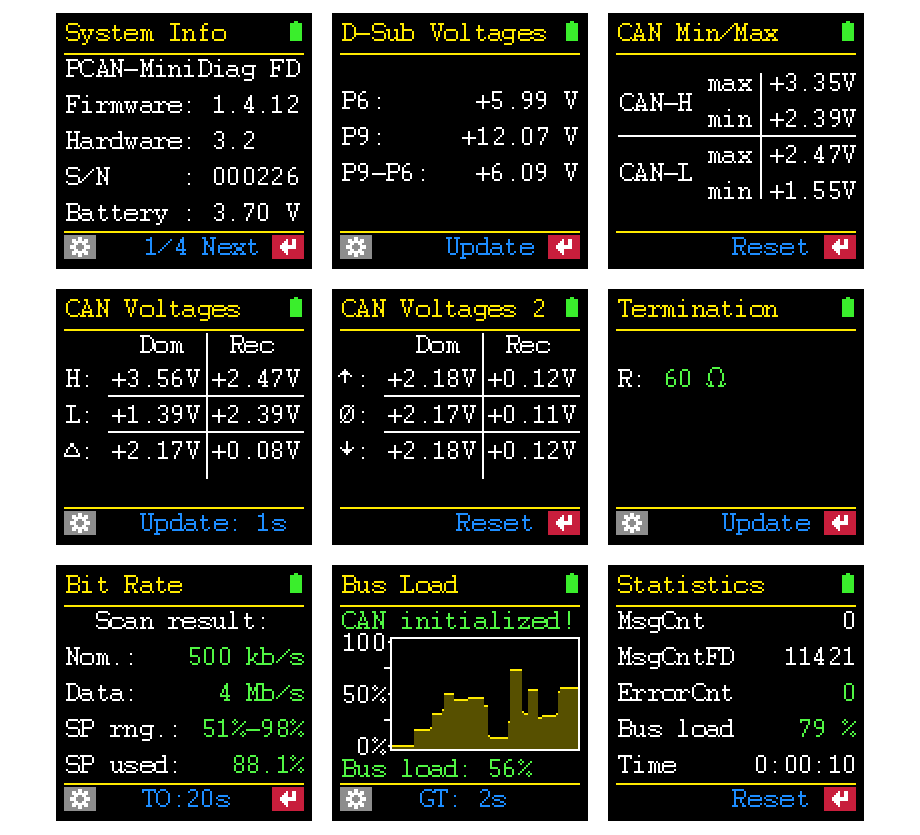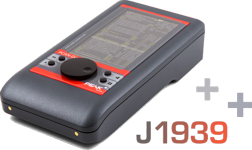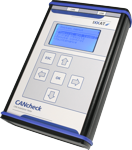PCAN-MiniDiag FD
Compact Diagnostic Device for CAN and CAN FD
Features and Benefits
- Measurement of minimum and maximum voltage values for CAN-High and CAN-Low in the range of -5 to +8 V
- Measurement of dominant and recessive levels for CAN-High and CAN-Low in the range of -5 to +8 V
- Measurement of minimum, average and maximum values of the dominant and recessive levels
- Measurement of the bus termination on the CAN bus
- Automatic detection of bit rates via exact bit timing measurements or manual bit rate configuration
- Measurement of the CAN bus load with diagram display
- Counters for CAN, CAN FD and error frames
- Voltage control on the AUX pins 6 and 9 in the range of -40 to +43 V
The CAN FD standard (CAN with Flexible Data rate) is primarily characterized by higher bandwidth for data transfer. The maximum of 64 data bytes per CAN FD frame (instead of 8 so far) can be transmitted with bit rates up to 10 Mbit/s. CAN FD is downward-compatible to the CAN 2.0 A/B standard, thus CAN FD nodes can be used in existing CAN networks. However, in this case the CAN FD extensions are not applicable.
| Technical data | |
| CAN | |
| CAN controller | CAN 2.0A/B |
| CAN baudrates | 10 kBit/s ... 1 Mbit/s |
| CAN-FD | |
| CAN-FD controller | ISO and Non-ISO standards |
| CAN-FD baudrates | CAN FD bit rates for the datafield (64 bytes max.) 66,6 kbit/s ... 10 Mbit/s |
| CAN-FD transceiver | Microchip MCP2558FD |
| CAN connection | Dsub-9 Acc. to CiA 106 |
| Display | OLED 128 x 128 pixels |
| Power supply | 3x Micro AAA battery of 1.2 V or 1.5 V |
| Temperatur range | -10 ºC t/m +50 ºC |
| Certification | CE |
| Dimensions | 122 x 69 x 44 mm |
| Contents of delivery |
| - PCAN-MiniDiag FD |
| - Batteries |
| - Manual |
| - Quick start guide |








